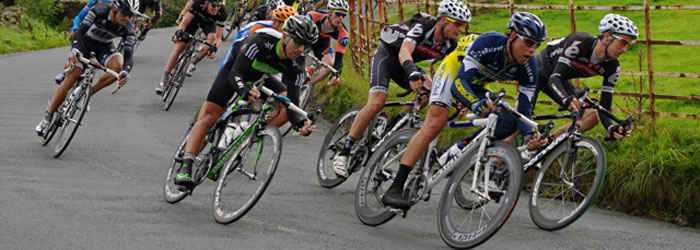Why Olympic Rowers and Runners Have Different Physiques

Ian Taylor
(ISNS) -- Olympians competing in the many endurance sporting events have such different body shapes because the physics and physiology of moving fast -- and efficiently -- require it.
A sport's physical demands dictate the dimensions of the athletes who tend to succeed at it. It's rare that an atypical body shape can survive in elite competition despite built-in disadvantages. Olympic swimmers have long arms. Cyclists have muscular legs. Marathoners are smaller than 800-meter runners. Rowers are tall and strong.
"It is a fascinating thing, because it is so Darwinian," said Stephen Seiler, an exercise physiologist at the University of Agder in Kristiansand, Norway. If attending a track meet, he said, "I can look at three of the athletes at the starting line, I can tell you what event they're doing."
"As you look at the runners as you go up from the 100-meter to the marathon, the runners are getting progressively smaller," said Keith Baar, an exercise physiologist at the University of California, Davis. "The more muscle mass you have, the more you have to carry, the less efficient you are."
But in rowing, swimming, and cycling, even though they also require tremendous stamina, that's not necessarily true.
The oars of a boat and arms of a swimmer provide the lion's share of the propulsion to accelerate each through the water. In both cases, the athletes can go faster by generating more power with each stroke. Having longer arms and legs enables a rower to do that by keeping an oar in the water over a longer arc. Another way to generate more speed is by increasing the number of strokes -- but that uses more energy.
"On average, swimmers are going to be long athletes with a big wingspan," said Seiler. "Longer limbs, like the hands … they are able to do work on the water over a larger distance."
This means that swimmers with long arms have a built-in advantage. With each stroke, they can accelerate over a greater distance. "The same is exactly true of rowing," said Seiler.
"When you're rowing, because the water is resisting you, every time you take a stroke, your muscles in your legs, your back and your arms are all doing these shortening contractions that are going to be highly powerful," said Baar. "But [the muscles are] going to be needed to have lots of mass and strength in order to overcome the inertial drag of the water."
Cyclists are an interesting case. Whether big or small, they are all turning the same-sized crank, so the sport doesn't offer the same massive advantage for longer limbs. But, as is true for rowers, large muscles are a benefit.
"We always say [cyclists] look like dinosaurs, where they have no upper body and massive legs," said Baar.
Another factor that contributes to the ideal body shape for cyclists is gravity, which plays a major role in road races, and helps explain why the riders who win the mountain stages of the Tour de France tend to be the smaller competitors.
"Within cycling there are issues related to the physics of it. How much are you punished by having to carry your body weight?" said Seiler. "If you are working uphill, then carrying your body weight becomes a big cost."
Elite athletes in any of these sports are all top competitors, and might, with time to train, become accomplished in other events. But they would be unlikely to reach elite performance levels.
East African runners have long dominated distance running events, and will typically have the capacity to use more oxygen per unit of body mass than rowers. But distance runners lack the sheer size to compete on the water, said Seiler. They wouldn't be able "to make the boat go fast enough," he said.
Elite rowers tend to be about 6 feet 5 inches tall, 215 pounds, said Seiler. Top distance runners are often a foot shorter, and several dozens of pounds less. Just don't ask the rowers to take their sea legs to the track.
"The Kenyan runners will run rings around the best rowers in the world in the track in the 5000-meters; it'll look silly," said Seiler.
Many anthropologists contend that our species is well suited to sustained, controlled exercise like distance running. But these other endurance events are quite different.
"[Cycling, rowing, and swimming] are really tricky because you're trying to maintain this big mass while you also build endurance," said Baar. "We've evolutionarily been designed to not allow that. We're having to develop these tricks in order to be able to do that."
Exceptions to these typical body types can be found. Jamaican sprinter Usain Bolt is one. He is, at 6 feet 5 inches, taller than most successful sprinters. That sort of anomaly becomes an opportunity for scientists to study a sport from a new perspective.
"I'm just an Olympic nut," said Seiler. "Every four years it's a huge exam for sports science."

